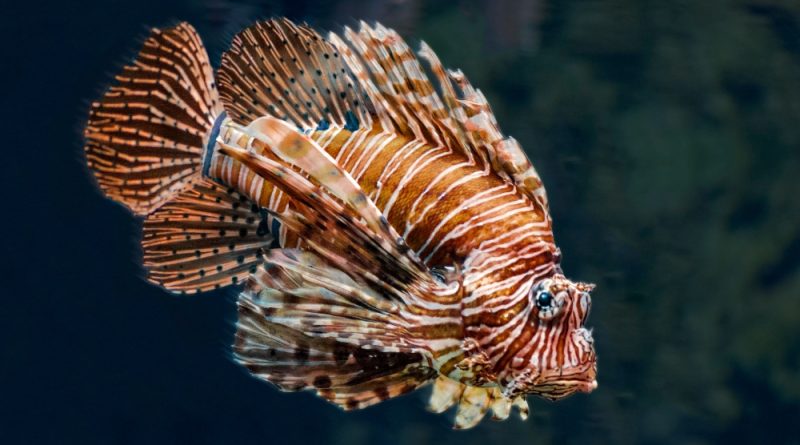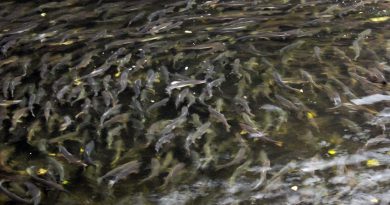Poisonous Fish that live around the world
If you enjoy fishing, there are certain fish species you need to be cautious about, as some can be very dangerous. Get to know the 5 most dangerous poisonous fishes in the world!
Poisonous fishes can be found in both saltwater and freshwater. In rivers and seas, the venomous creatures that exist aren’t limited to fish! Hidden in the vegetation is the blue-ringed octopus, which is only 20 centimeters long but possesses powerful venom.
Therefore, the most dangerous marine creature in the world is the Australian box jellyfish found in Asia and Australia. The venom of this creature is also potent, and due to the rapid action of the venom, very few people can survive an encounter with this creature.
But aside from this, there’s another extremely dangerous jellyfish, the Irukandji or sea wasp, considered the most venomous animal on Earth! It is common off the coast of Australia, roughly the size of a thumbnail, and transparent. However, its venom has no antidote!
Of course, jellyfish are abundant on the coast of Brazil. Most of them cause only skin burns, nausea, vomiting, and fever. A Brazilian animal very similar to the Portuguese man-of-war is the Portuguese man o’ war, except that it floats in the water and cannot move on its own.
Its tentacles can reach up to 30 meters. In fact, it is not an animal but a living body composed of interconnected groups of cells. However, it is highly toxic. But in the ocean, we can still mention other venomous animals, such as sponges and mollusks.
After talking about other highly venomous animals, let’s get to know the 5 most dangerous poisonous fishes in the world!
What is a Poisonous Fish?
There are various types of poisonous fishes in the world. Poisoning can occur through bites or ingestion of poisonous fishes. In Brazil, most accidents are related to marine fishes. The most poisonous fishes are:
- Catfish
- Stonefish
- Pufferfish
- Scorpionfish
- Lionfish
- Stonefish
- Sabertooth Blenny
- Cowfish
- Foxface
- Chimaera
- Pufferfish
- Mandi
- Thorny Catfish
- Mirim
- Mamaiacu
- Stingray
- Toadfish
- Catfish
Although there are various types, we will highlight 5 to discuss a bit more. The first we’ll talk about is the catfish!
1 – Catfish
Catfish are fishes that live in both freshwater and saltwater. By the way, there are over 2,200 species of this fish in total, and some species can live up to 60 years. But most species originated in Latin America.
Among the species found in Brazil, we have the yellow catfish, which is a marine species. Considered one of the most venomous animals inhabiting the coast of Brazil. The main areas are the southern and southeastern regions, where spines in the distal regions of the fins, dorsal and pectoral fins of the catfish cause poisoning.
Moreover, poisoning can occur through glands in the spines and mucus produced by the animals. Thus, symptoms include cramps, swelling, paralysis, and necrosis.
The poisonous fishes we will mention here are not in the dangerous range. But they all deserve special attention and necessary care.
2 – Stonefish
This poisonous fish is found in the Indo-Pacific and is also abundant in some parts of Australia and Oceania. Among highly poisonous fishes, it is one of the most dangerous fishes in the world!
The animal’s venom is injected through 13 spines located on its back. Stings can cause intense pain, diarrhea, vomiting, paralysis, difficulty breathing, and swelling, among other things.
In some parts of China, Japan, and the Philippines, this fish is a common food, sashimi. However, it is expensive because it is rare and difficult to clean. The vast majority of accidents with this animal happen when people step on it because of its great resemblance to a stone.
3 – Pufferfish
This is probably one of the most famous fishes on the list, as it is considered a delicacy in Japan and Korea. In Japan, it is known as fugu, and in Korea as Bok-uh. Despite its cute face, the venom of this fish can be deadly.
By the way, this fish has a toxin 100 times stronger than cyanide! Japan is the country with the most problems of pufferfish poisoning due to the consumption of the animal. Therefore, there are dedicated chefs who prepare delicious meals.
Another distinctive feature of the pufferfish is that it inflates like a balloon when it feels threatened. In Brazil, it can be found in the northeastern and southeastern regions. However, there are over 120 pufferfish species recorded worldwide.
Now, let’s talk about the poisonous fishes
that are common on the coast of Brazil.
4 – Scorpionfish
Another of the poisonous fishes that live around the world is the Scorpionfish. They are not as dangerous as the other fishes presented here. The venom is left in their spines, which are in their fins. This animal lives alone, usually near sand, rocks, or soil.
Accidents rarely happen between humans and catfish, but their sting can cause severe pain, vomiting, and respiratory failure.
5 – Niquim, the Poisonous Fish, also known as Beatriz or Devil Fish
Despite its small size of only 15 cm, Niquim can cause havoc. This fish lives in brackish and freshwater along the northeastern and northern coasts of Brazil. Every year, it causes about 100 accidents in coastal areas where people suffer from seizures, swelling, headaches, unbearable pain, fever, and localized necrosis.
By the way, the spines responsible for injecting venom are located in the fins, head, and spine of the fish. Therefore, most accidents with this fish occur in rivers with muddy and sandy beds. People accidentally step on the fishes.
Today, you learned about the poisonous fishes living around the world; now, just share this super dangerous curiosity with your friends.




